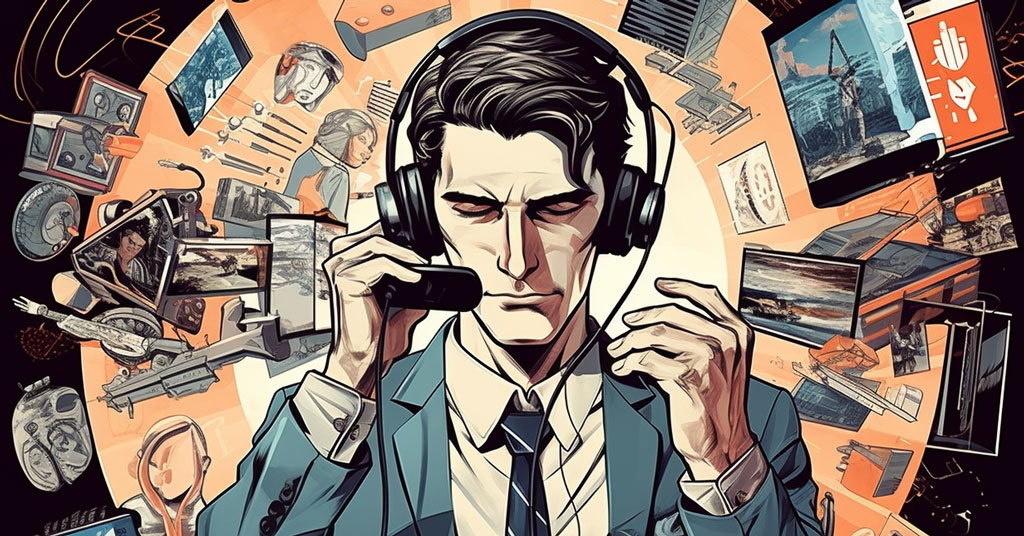Tech Trends: How 5 brands keep abreast of new technologies

Michael Haith, the CEO of Teriyaki Madness, has been making this prediction for a few years: In the not-too-distant future, when delivery orders come in, his restaurants will prepare and package the food, and then drones will zip the meals over to customers while the orange chicken is still hot and the egg rolls are still crispy.
It makes sense that drone delivery piques the interest of Haith and many others. Any technology that increases convenience for customers can’t be ignored in the rough-and-tumble world of restaurant franchising or any other kind of franchising.
The digital revolution has kicked into overdrive for franchisors and franchisees alike. From spiffed-up apps and detailed analytics to emerging artificial intelligence, all of it is being deployed in the fight for consumer dollars and loyalty. When drone delivery becomes widely available, it’s a safe bet it will be widely used.
But if you think Haith and his franchisees are waiting for that day to make their customers’ experiences as quick and easy as possible, you’d be sorely mistaken. Teriyaki Madness is constantly looking for ways to use technology to make operations more efficient and to respond to customer needs, he says.
“If we can create a really high-quality product and know exactly when our customers want it, we can cook it as fresh and as quickly as possible and get it in the hands of the customer with as little friction as possible. That’s really our goal,” he says.
Toward that end, Teriyaki Madness, which has 130 locations, is testing something new. The company has incorporated technology from the navigation app Waze into its own app. If all goes well, he says, “We can actually see our customer driving to our shop, so we’ll know when they are pulling into the parking lot and be standing out there with their food and put it in the back of their car. It’s actually faster than a drive-thru,” he says.
“It also provides us visibility into the third-party delivery drivers, so we know when they’re coming,” he says, which means drivers don’t have to sit there and wait for the food. “It makes them more money, and it makes them more efficient,” Haith says.
Although the new technology is still in the pilot stage, franchisees are thrilled, he says. “One of the things about Teriyaki Madness is we understand that the restaurant business is just as much about technology now as it is about food,” he says. “Because it’s really about an experience—what experience our customers would like to have ordering their food.”
Staying atop of tech
Franchises that don’t stay on top of technological advances are going to fall behind very quickly. The pandemic made that clear, says Carl Bachmann, president of Smashburger. He took on the role just months before coronavirus became a buzzword. Previously, he’d served as chief operating officer.
“Before 2019, I made a lot of changes to the brand. We had really updated it from a food-quality standpoint, from a menu standpoint what our offerings were,” he says.
However, to get the word out about the new-and-improved Smashburger, he needed to increase brand awareness. While many of Smashburger’s competitors had settled on a single third-party delivery service (usually to secure a better rate), he decided to go with multiple delivery services. As it happened, his timing could not have worked out better for the franchisees.
“Once the pandemic hit, our dine-in business dropped from 65% of our business to 1%,” he says. “But we had the aggregators and the ability to do takeout and delivery, which led us to pivot from a primarily dine-in model to increased takeout offerings.” This, he says, contributed more than a quadruple (436.7%) increase in digital and call-in orders.
While other restaurants scrambled to secure delivery, Smashburger’s franchisees were sitting pretty. Bachmann focused on speeding up technological upgrades. “One of the things that we realized was that our website was clunky,” he says. “It was inefficient, and we needed to stabilize first. Reliability, consistency, and stability were first and foremost.” With its extensive integration with third-party platforms, Olo helped the brand increase efficiency in the restaurants and improve customer service, he says.
In 2020, the organization recorded the highest same-store sales growth in history. That is, until the next year ,when the brand surpassed that number. “It was really a result of us adjusting the business quickly to new technology and digital transformation,” Bachmann says. “It saved our business. It challenged us. It was expensive to do, but the options were pretty limited. So it was really important for us. And because we did it early and quickly, it actually became a competitive advantage. I also believe that it leveled the playing field against our competitors.”
Smashburger continues to look for other ways technology can help its franchisees meet consumers’ demand for convenience. This year, the company, which has more than 250 locations, debuted a virtual drive-thru at a corporate-owned store in Houston. The old drive-thru model served its purpose well, he says, but the days of doing it that way are numbered.
It once was groundbreaking to offer customers the option of driving up to a menu board to place an order, to funnel them to a second window to pay, and then to a third window to collect their food, he says. “There are three steps in that process. It takes a long time and it creates a backlog of cars.”
Smashburger teamed up with the digital ordering system Curbit to create its virtual drive-thru. After customers order through the Smashburger app, Curbit’s system allows them to track their order from start to finish, dramatically reducing—if not eliminating—wait times.
“We communicate to the guest and tell them exactly when to show up at the window,” Bachmann says. “And now, instead of three steps in the process, there’s only one, and that one step is maybe 15 or 20 seconds. You pull up to the window at the exact time we tell you, we hand you the food, and off you go. That’s a virtual drive-thru, and you’re going to see more of that.”
For cities and towns, it’s a better setup because it’s not a traffic generator, he says. For franchisees, the benefits are clear. It speeds up service, improves accuracy, and reduces labor costs. It also gives franchisees more flexibility because virtual drive-thrus can be operated on less real estate, in different-sized buildings, and in different types of shopping centers. At the same time, the virtual drive-thru keeps customers at the forefront.
Restaurants that aren’t paying attention to their customers’ evolving habits are going to struggle, Bachmann says. “We know how innovations like these only will enhance the customer experience. We are implementing a blend of technology, both developed in-house and licensed now. Going forward, we hope to focus on automated voice ordering, social media ordering, automation in stores, QR code menus, and AI-based order and marketing messages.”
Businesses today must create “a kind of omnichannel approach to reaching consumers,” he says. “I think it’s the responsibility of a franchisor to close that gap and create those opportunities for franchisees.”
How long before there are robots working in the kitchen at those virtual drive-thrus?
“We still rely on the human being doing it and having the passion around putting out a great product,” he says. “I do think those things are coming, but I don’t think they’ll ever replace a passion for making a product.”
Looking for each customer’s “why”
Of course, it’s not just restaurants that are adapting to an increasingly digital world. Technology allows businesses to answer two questions that are fundamental to their success: 1) Who is purchasing from your business? and 2) Why did they purchase? Says Michael Browning Jr.
Browning is the founder and CEO of Unleashed Brands, a company that focuses on youth enrichment through its 1,300 units that are open or under development across six brands: Urban Air Adventure Park, The Little Gym, Premier Martial Arts, Class 101, Snapology, and XP League. Data for all of Unleashed’s customers are fed into a data lake. Then the company profiles them on more than 3,000 demographic and psychographic attributes.
“Too many times in business, people try to be everything to everyone. And when that happens, they get so watered down they really can’t make an impact,” Browning says. “The Millennial family is who we’re advertising to. We’re talking to them about why they should be a part of our enrichment platform. Knowing why your customer purchased from your business, using technology and data, helps you talk to them about the why instead of the what,” he says.
“We don’t sell karate; we sell discipline, self-respect, respecting authorities, and courage. We don’t sell gymnastics; we sell getting your child socialized in a group, listening to their coach, balance, agility and, again, courage. That’s what we sell to our consumers because we know that’s the ‘why’ behind them spending their money on their kids in our programs.”
It’s also the type of information that gives its franchisees a competitive edge, and it’s a key selling point to prospective operators, he says. All franchisors, if they’re doing it right, should, he says, “be providing the systems, processes, and team that simplify operations for franchisees so they can focus on delivering the best customer experience possible. We know that our franchisees deliver amazing enrichment services. What we want them to be doing is teaching the gymnastic and martial arts classes, interacting with the families on the floor at Urban Air Adventure Park, and coaching kids on what the right college is for them—not spending the majority of their time on back-office administrative functions. That’s where technology comes in.”
The company built a website that acts as a command center and steers customers of one website to Unleashed’s other brands. All the information that parents need on those brands is in one place, so there’s no need to bounce between websites and apps. A kid who ages out of The Little Gym might be interested in Snapology. Kids and parents who enjoy Premier Martial Arts might like XP League.
“This technology has been wildly successful for franchisees because when a customer (typically a Millennial family with 2.23 kids on average) signs up for one of our brands through the technology, we’re able to educate them about how our other brands can supplement and provide additional enrichment,” Browning says.
The company also is closely following improvements in AI technology that allow for dynamic pricing. In other words, the busiest times could cost more and the least busy ones less. Browning predicts dynamic pricing will be a big deal in franchising and that more businesses will use that strategy in the future.
“What I’m talking about is that in franchised service-oriented businesses pricing will change based on demand,” he says. “For example, at Urban Air everybody wants to come at 2 p.m. on Saturdays, so that’s our peak time. With artificial intelligence technology in pricing, we can help consumers offload into other times of the day by giving them a discount on price that they may appreciate, while giving the people who really just want to come at 2 p.m. on Saturdays the ability to do that. It’s going to cost them more, but it will also make it so there’s not as much of a crowd there, so everybody has a good experience. I can see dynamic pricing driving higher customer satisfaction in the service industry of franchising in the near future.”
(For more about Browning and Unleashed, also see his CEO profile in this issue.)
Riding the cutting edge
The technological enhancements provided by franchisors are wide-ranging. Batteries Plus is leveraging databases in a new way to improve customer service and save time for franchise operators, says Chief Franchising Officer Joe Malmuth.
“When a customer walks through the door or picks up the phone and calls one of our franchisees and says, ‘Hey, I think I need a car battery, but I don’t know what battery to get,’ all we have to do is say, ‘Give me your license plate,’” Malmuth says, adding that a digital tool will “actually look up the make, the model, the year, and what battery is most appropriate for that car at two or three different price points. It kind of takes the guesswork out.”
Batteries Plus is leaving no stone unturned as it analyzes where technology can help improve efficiency. Recently, to aid in order fulfillment, the company invested in RFID for its warehouses and distribution centers.
“In all aspects of our business, we’re looking at and seeking out opportunities to improve our processes in ways that speed things up, improve accuracy, and improve margins to ultimately benefit the success of the business owner,” Malmuth says.
Technology has proven helpful in franchise development as well. With more than 700 locations throughout the U.S., it’s not hard to find a Batteries Plus store if a prospective franchisee wants to check out a store before committing. But it was time-consuming to check out multiple units. Not anymore.
“We’re able to pull up a 3D virtual walk-through of a number of our stores. The advantage to that is we can give multiple real-world experiences to potential investors in a store setting,” Malmuth says. “It really helps to augment the experience of those franchise candidates instead of other scenarios where they might get to visit one location because it’s the one down the road or in a neighboring territory. We can look at 15, 20, or 30 locations instead of the one and help them with that process.”
At trade shows, company officials hand out a branded virtual reality viewer similar to a Google Cardboard device. “It fits over your face almost like a snorkel mask, and you can slide your cellphone into that and pull up a certain type of video feed and have a 3D, interactive experience inside a location,” he says.
This year, roughly 45 Batteries Plus stores will open, and there are another 150 in the pipeline, he says. Lately, much of the tech the franchisor has developed and deployed is aimed at making it easier for multi-unit operators to manage their portfolios of Batteries Plus stores whether that’s inventory, sales databases, or forecasting.
“We’re trying to stay as much ahead of the curve or on the cutting edge of that technology as we can,” Malmuth says.
Digital spa
Not long ago, Siddharth Desai was named chief digital and technology officer for Hand & Stone Massage and Facial Spa, which has more than 550 locations in the U.S. and Canada. He and members of his team work hard to keep up with the latest tech trends.
“Every part of the operation has some technological element to it, whether it’s training, software, point-of-sale systems, social media, mobile apps, or digital payments,” he says. “At the end of the day, staying on top of that will help us attract not only customers for our franchisees, but also will attract franchisees to the brand.”
Still, it’s not easy. Tech advances are growing exponentially. That’s why it’s important for franchisees to bear in mind that this moment is not about just keeping up with the latest tech tools.
“A lot of it has to do with a cultural mind shift more than a specific technology or tool,” Desai says. “One of the ways we are leveraging our data platform here is using it to better understand our guests, not only in their behaviors but in how they interact with our brand both digitally and in the spa—and then tapping into the data on how we can have our employees operate more effectively and efficiently,” he says.
“If we focus on our customers, we have an opportunity to mine that data to better interact with our customers how they prefer, whether it’s through a digital channel or in the spa.”
Share this Feature
Recommended Reading:
FRANCHISE TOPICS
- Multi-Unit Franchising
- Get Started in Franchising
- Franchise Growth
- Franchise Operations
- Open New Units
- Franchise Leadership
- Franchise Marketing
- Technology
- Franchise Law
- Franchise Awards
- Franchise Rankings
- Franchise Trends
- Franchise Development
- Featured Franchise Stories
FEATURED IN

Franchise Update Magazine: Issue 2, 2023








 The franchise listed above are not related to or endorsed by Franchise Update or Franchise Update Media Group. We are not engaged in, supporting, or endorsing any specific franchise, business opportunity, company or individual. No statement in this site is to be construed as a recommendation. We encourage prospective franchise buyers to perform extensive due diligence when considering a franchise opportunity.
The franchise listed above are not related to or endorsed by Franchise Update or Franchise Update Media Group. We are not engaged in, supporting, or endorsing any specific franchise, business opportunity, company or individual. No statement in this site is to be construed as a recommendation. We encourage prospective franchise buyers to perform extensive due diligence when considering a franchise opportunity.